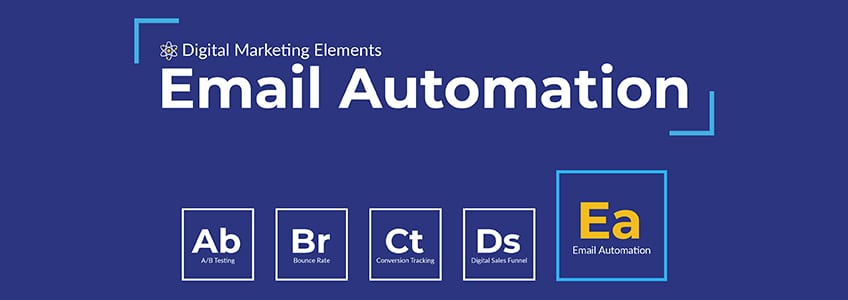
What is Email Automation?
It sometimes feels like marketing emails plague our inboxes daily. However, of all the elements of digital marketing, email marketing reigns as one of the most consistent forces in generating powerful ROI and increasing customer retention. 73% of millennials prefer communications from businesses to come via email and 59% of a Hubspot survey’s respondents say that marketing emails influence their purchase decisions. Automating your email marketing is the best way to ensure your efforts yield those results.
Email automation simply means working with a tool that sends your emails to individual prospects or customer segments at specific times based on their interests and behavior. Companies that automate their email campaigns generate twice as many leads as those that send emails through standard software. Automation improves the relevancy, timeliness, and effectiveness of your email campaigns.
For any company that sells products online, connecting its email database with its website is necessary in order to message website visitors and customers based on their behaviors. For example, if you want to be able to follow up with a potential customer who abandoned their cart, you need to have automated email campaigns set up. So, how do you do automate your email marketing strategy?
Best practices
First, it is important to identify what quality email automation does NOT include because anyone who owns an email address inevitably has fallen victim to bad email marketing practices. Here are our tips to maintain a good reputation and relationship with customers through email.
1. Segment your audience
How confused do you feel when you receive an email that doesn’t have anything to do with you? A good automated email does not take the “spray and pray” method, which means blasting a one-size-fits-all message to a mass audience. Instead of doing this, identify user interests, activities, and behaviors to create messages that resonate with those unique audiences.
At Cazarin Interactive, we use tools like SharpSpring to gather information about visitor activity after they click through an email and create automated email campaigns specific to user behavior. Excluding those who either have already purchased or have not historically shown interest from your promotional emails is one way to avoid landing on someone’s “do not contact” list.
2. Nurture your audiences
So you’re collecting emails (responsibly, of course), now what do you do with them?
If you hang onto an email list of recent interest and fail to follow up with its members in a timely manner, there is no guarantee that the audience will remember you in a week. This is when confirmation emails and drip campaigns come into play.
Use your email automation system to send new sign-ups or potential customers a campaign that thanks them for their interest and informs them of what to expect as a member of your online community. It tends to take 6 to 8 touches to generate a viable sales lead. The foundation of any good email automation strategy is a drip campaign that sends information to prospects repeatedly over the course of long periods of time, taking them through your digital sales funnel.
3. Track like your business depends on it
Data is going to be the ultimate decision-maker in any email automation strategy. It isn’t uncommon for companies to fly blind and stick to the email campaign methods they’ve gotten used to over the years. But, customer interest changes based on trends, and data shows that email marketing strategies require constant tweaking.
Some of the most important data to pay attention to are click-through rates, open rates, and conversion rates. Here is what those metrics mean:
- Your click-through rate will be the number of clicks your email receives in relation to how often it was viewed. To improve your click-through rate, focus on creating more compelling email content that intrigues your audience to visit your website.
- Your open rate is the percentage rate at which people open your emails. Email subject lines play a huge factor in deciding open rates. A good practice to measure their individual performance is to A/B test different subject lines for the same email and compare metrics.
- Your conversion rate ultimately reveals what actions your audiences take throughout your buying process and how effective your overall campaigns are. Your emails could be the beginning, the middle, and the end of the overall buying process. Tracking conversions will reveal where changes need to happen to make the process as easy as possible for customers.
In 2020, Cazarin Interactive implemented automated email marketing for an eCommerce industrial tools client. Within a year, the company’s automated emails drove an average open rate of 41.19% and a click-through rate of 7.93% compared to the 22.4% open rate and 3.2% click-through rate averages for their industry.
For a client in the Consumer Packaged Goods industry, Cazarin Interactive’s dynamic cart abandonment emails drive an average open rate of 40.2%, a click-through rate of 18.85%, and an eCommerce conversion rate of 11.53%. Time and again the numbers show that targeted and timely automated emails drive meaningful business results.
All of these factors encompass the elements that make up a solid digital marketing strategy. There will always be naysayers who claim that automated email marketing is dead. But, for any business in the eCommerce industry, email automation is a necessity that is here for the long haul.
Contact the Cazarin team today to discuss your email marketing strategy.
Let us know if we can help you in any way by emailing marketing@cazarin.com.





